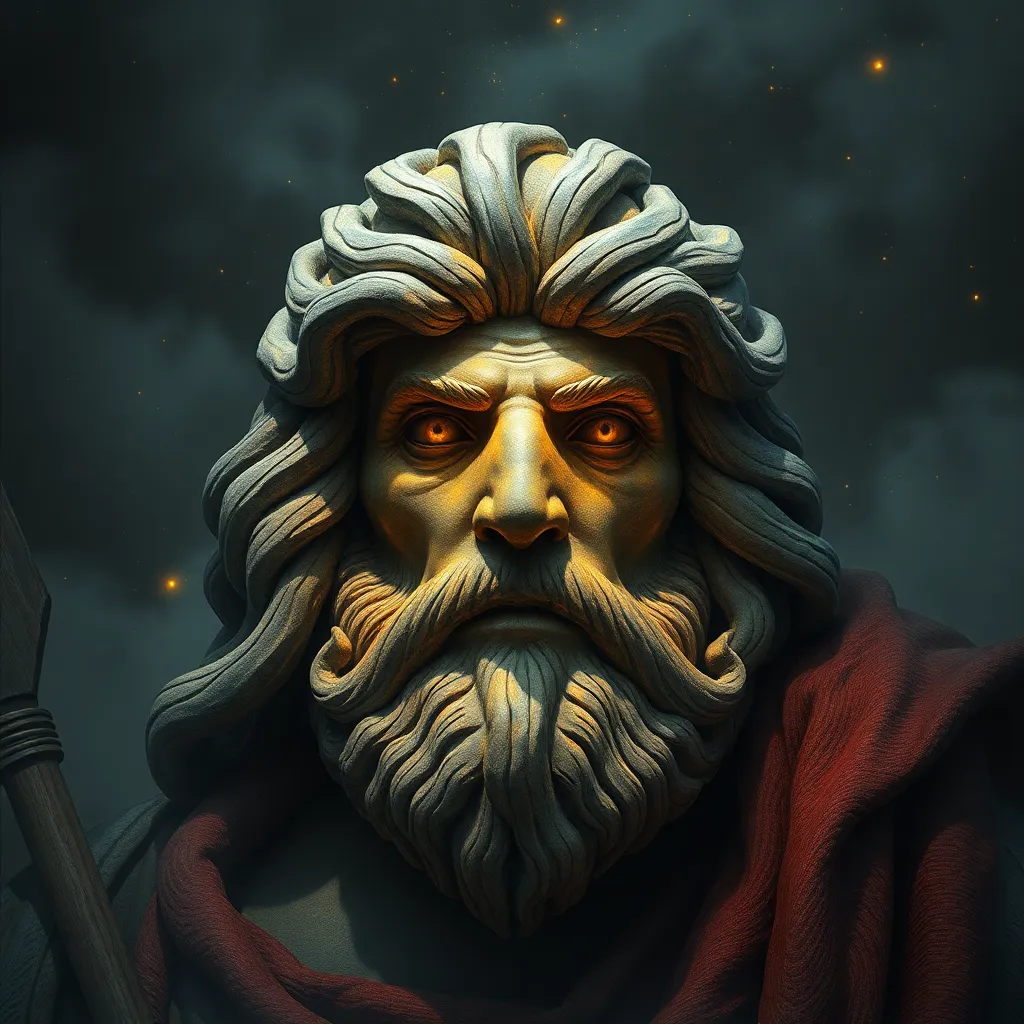The Legacy of Cyclops in Modern Fantasy Literature
Introduction
The Cyclops, a one-eyed giant from Greek mythology, has captured the imagination of audiences for centuries. Known for their immense strength and fierce nature, Cyclopes have played significant roles in ancient tales, particularly in the works of Homer. Their unique characteristics and stories of both heroism and villainy have made them a fascinating subject for exploration. This article aims to delve into the influence and legacy of Cyclops in modern fantasy literature, tracing their evolution from ancient myths to contemporary narratives.
Historical Context of Cyclops in Mythology
The origins of the Cyclops can be traced back to ancient Greek mythology, where they were often depicted as monstrous beings with a single eye in the center of their foreheads. The most famous Cyclopes are Polyphemus, encountered by Odysseus in Homer’s “Odyssey,” and the three sons of Uranus and Gaia: Brontes, Steropes, and Arges, who were known as the builders of Zeus’s thunderbolts.
Key stories featuring Cyclops include:
- The Odyssey: Polyphemus captures Odysseus and his men, leading to a tale of cunning and escape.
- Theogony: Hesiod’s account of the Cyclopes as craftsmen and allies of the Olympian gods.
In ancient narratives, Cyclopes symbolize brute strength and savagery, often serving as obstacles for heroes. Yet, they also embody the theme of the misunderstood creature, presenting a complex character that transcends mere monstrosity.
Evolution of Cyclops in Early Fantasy Literature
As literature evolved, so did the portrayal of Cyclopes. During the medieval and Renaissance periods, these creatures began to appear in various works, drawing on their mythological roots while adapting to new cultural contexts. The depiction of Cyclopes in early fantasy literature often reflected societal views on monstrosity and heroism.
Examples of Cyclopes in early fantasy include:
- The Faerie Queene: Edmund Spenser’s epic poem features a variety of mythical creatures, including Cyclopes, who serve as symbols of chaos and disorder.
- Paradise Lost: John Milton references Cyclopes in his portrayal of the fallen world, emphasizing their monstrous nature.
Over time, the characterization of Cyclopes shifted from purely monstrous figures to more nuanced representations, reflecting the complexities of good and evil.
Reimagining Cyclops in Contemporary Fantasy
In contemporary fantasy literature, Cyclopes have been reimagined in various ways, often as anti-heroes or misunderstood figures. Popular series like “Percy Jackson” and “The Lord of the Rings” offer fresh takes on the Cyclops mythos, exploring themes of identity and belonging.
Modern interpretations include:
- Percy Jackson: The character of Polyphemus is depicted as less of a villain and more of a tragic figure, adding depth to his portrayal.
- The Lord of the Rings: Cyclopean creatures are often used to represent the darker aspects of power and ambition.
Cultural shifts have influenced how Cyclopes are portrayed, with a growing emphasis on empathy and understanding rather than fear and loathing. This evolution reflects broader societal changes regarding the acceptance of differences and the complexities of identity.
Cyclops as a Symbol of Otherness and Monstrosity
The Cyclops has emerged as a powerful symbol of otherness and monstrosity, often representing isolation and alienation. These themes resonate strongly in modern narratives, where Cyclopes frequently embody the struggles of those who feel marginalized by society.
Key themes include:
- Isolation: Cyclopes are often depicted as living in solitude, reflecting the experience of individuals who feel disconnected from the world.
- Societal Norms: The monstrous image of the Cyclops challenges societal expectations, prompting discussions about what it means to be ‘normal.’
Case studies of specific characters in modern fantasy highlight these themes, showcasing the Cyclops as a figure that embodies the complexities of human experience.
Cyclops in Visual Media: The Influence of Film and Television
The portrayal of Cyclopes in modern adaptations, such as animated films and series like “Game of Thrones,” has significantly impacted audience perceptions. Visual media often emphasize the monstrous aspects of Cyclopes, but also explore their deeper emotional narratives.
Key points of examination include:
- Animation: Films often depict Cyclopes with exaggerated features, reinforcing their monstrous image while allowing for exploration of their emotions.
- Television: Series adaptations can provide nuanced portrayals, exploring the backstories and motivations of Cyclopean characters.
A comparative analysis of literary versus visual portrayals reveals differences in characterization and thematic focus, with visual media tending to prioritize spectacle while literature delves into the psychological depths of these beings.
The Cyclops Archetype in Fantasy Gaming
The Cyclops archetype has found a significant place in role-playing games and video games, where they are integrated into gameplay and storytelling. These characters often serve as formidable opponents or allies, enhancing the gaming experience.
Discussion points include:
- Role-Playing Games: Cyclopes are frequently included as monsters to challenge players, often reflecting their mythological roots.
- Video Games: Many games feature Cyclopes as characters that players can interact with, providing opportunities for deeper storytelling.
The legacy of Cyclopes in game design highlights their enduring appeal and adaptability, contributing to the rich tapestry of fantasy narratives in gaming.
Conclusion: The Enduring Legacy of Cyclops
The evolution of Cyclops from ancient mythology to modern fantasy literature illustrates the creature’s enduring significance. As symbols of otherness, monstrosity, and misunderstood identity, Cyclopes continue to resonate with audiences today.
Looking to the future, the portrayal of Cyclopes in literature and media is likely to evolve further, reflecting changing societal attitudes and the complexities of human experience. The importance of mythological creatures, such as Cyclopes, in contemporary storytelling lies in their ability to challenge perceptions and provoke thought, ensuring their place in the cultural imagination for generations to come.




